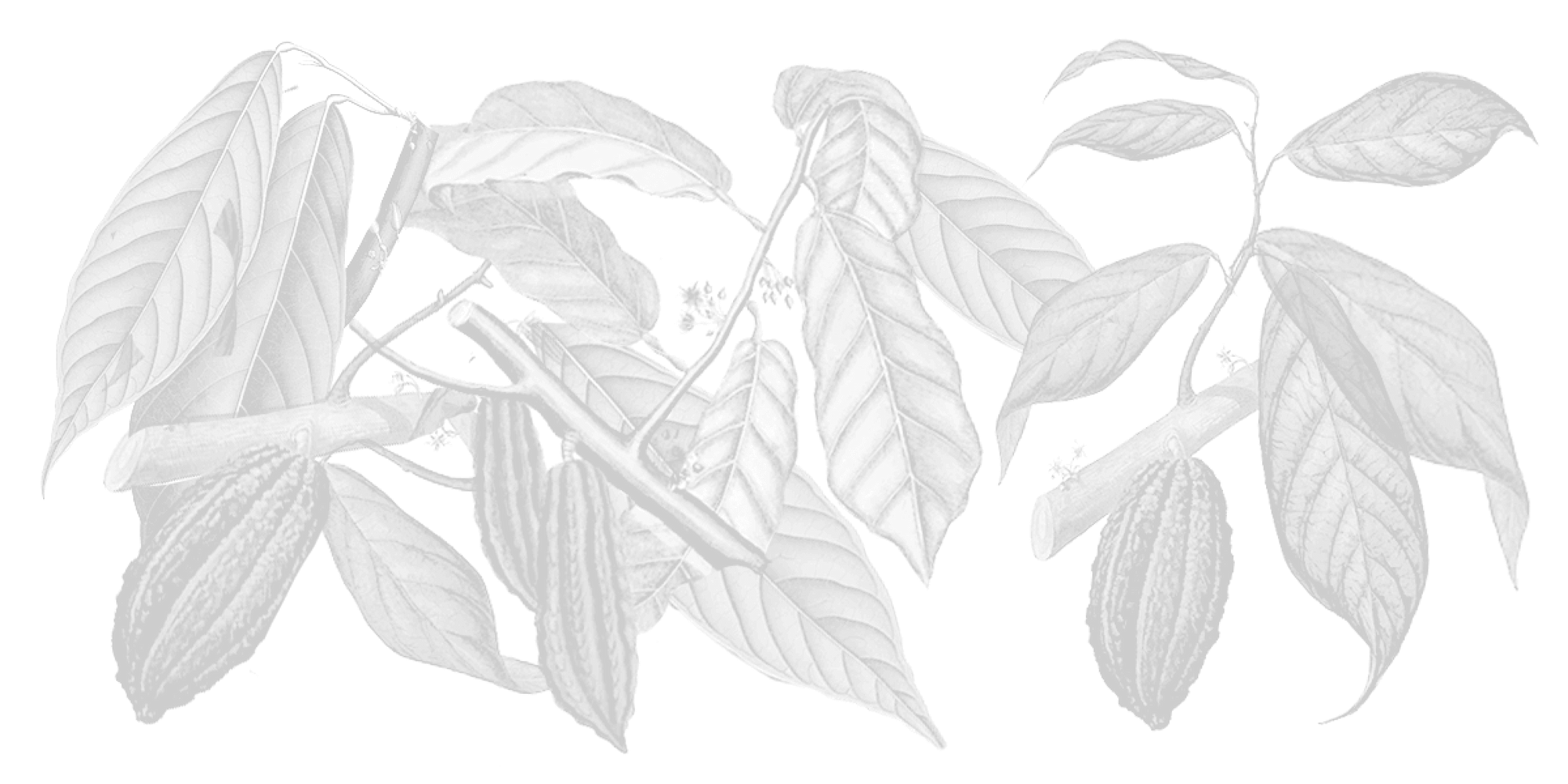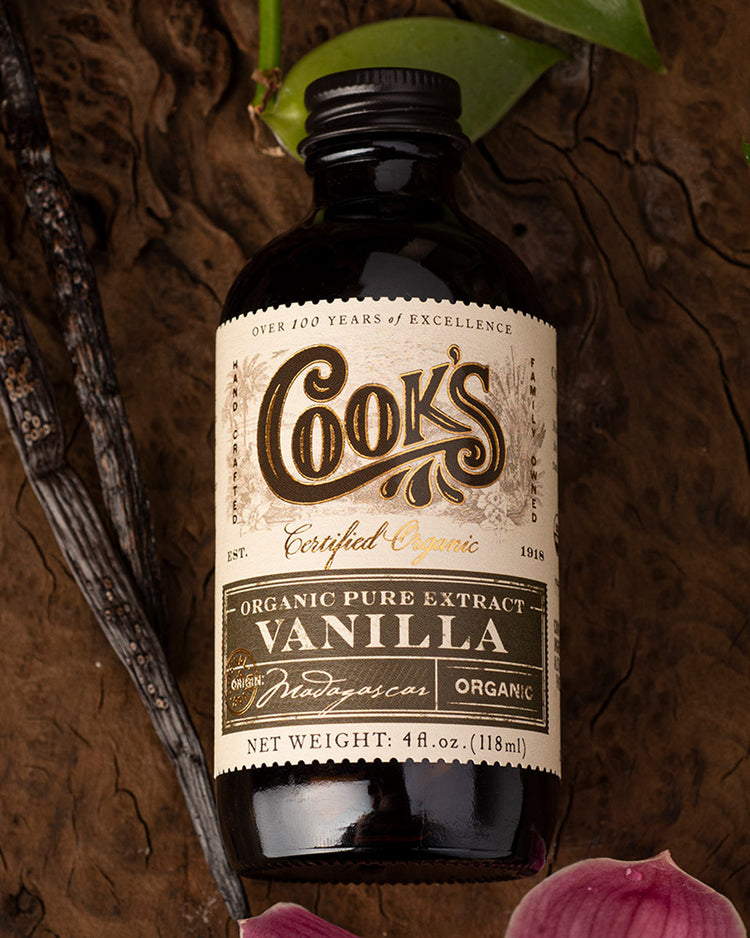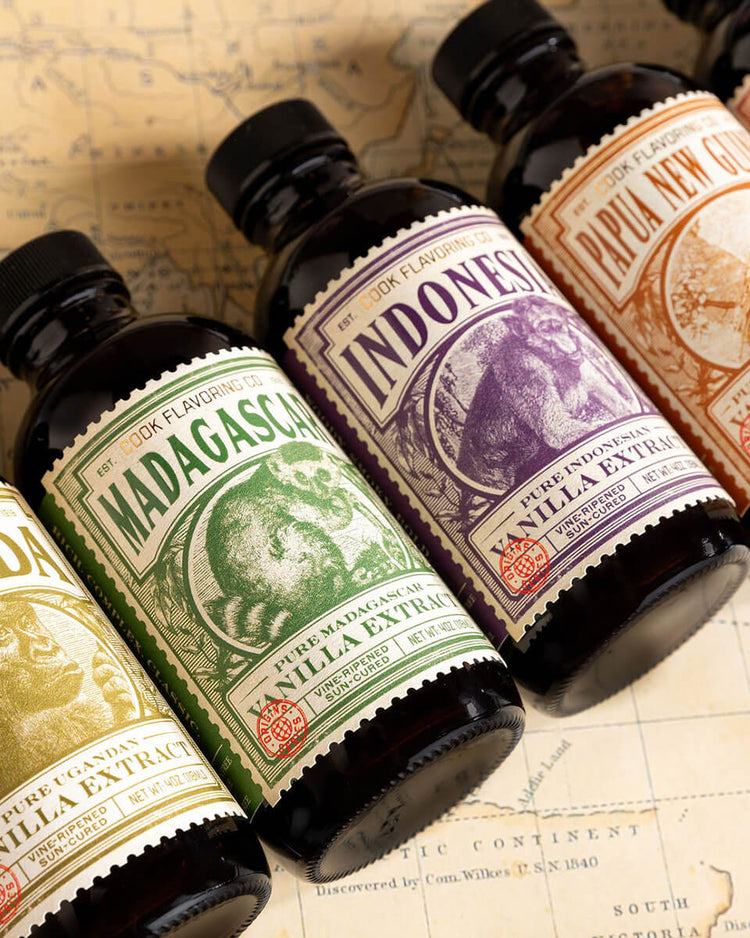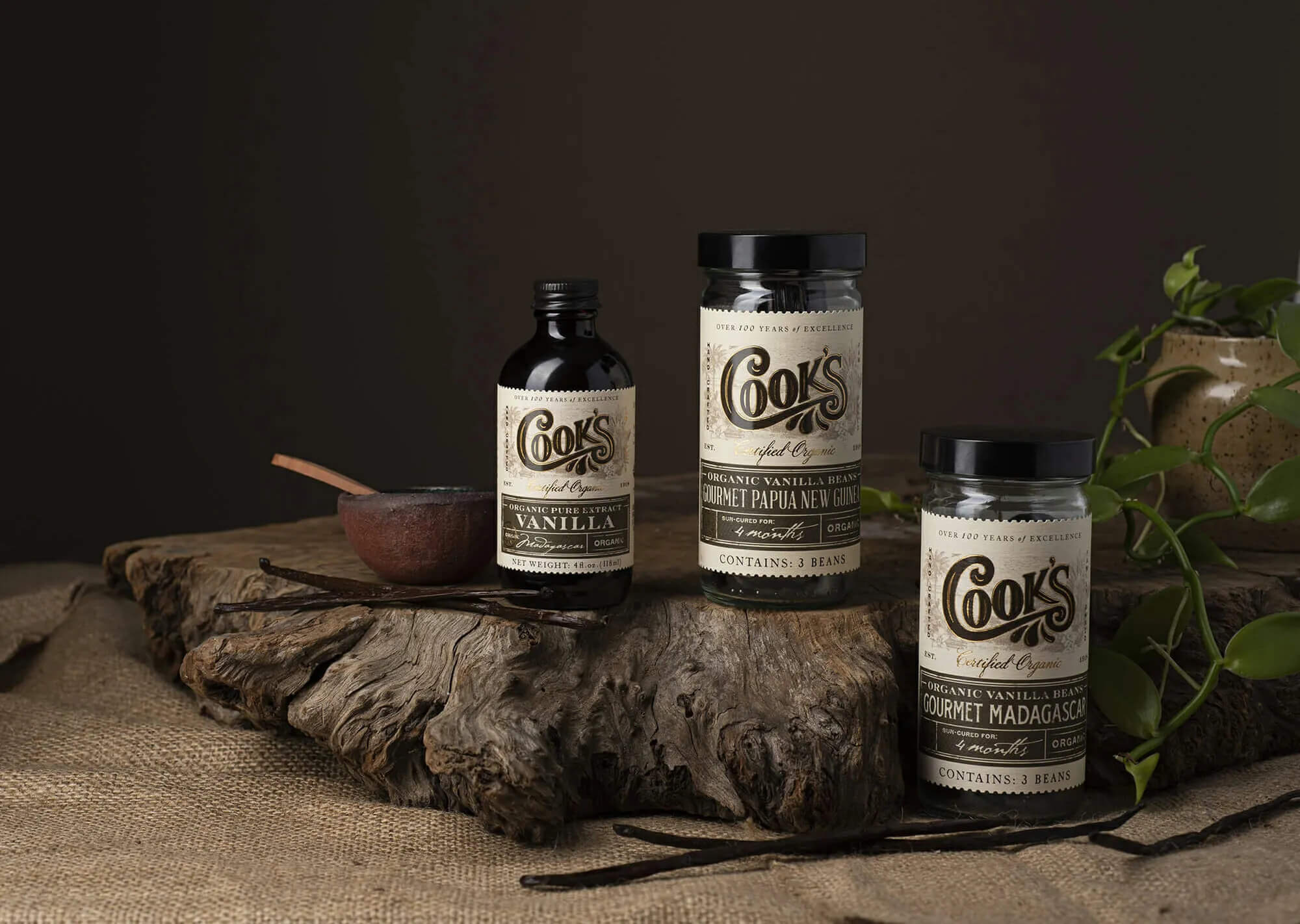You see it on your cans of sparkling water, ice cream cartons, cookie packages, and even in the ingredient list for some of Cook's products. But what exactly is a natural flavor? How can it be calorie-free? Are there any risks involved in consuming natural flavors? Let's get into it!
First, what is a natural flavor?
According to the FDA, a substance can be called a natural flavor if it is derived from plant or animal sources. (Wait, animal? We will get to that!) Typically, in today's sweet flavor industry (think lemon, strawberry, passion fruit, etc.) substances are derived exclusively from plant materials. This includes any part of the plant i.e. bark, root, leaves, buds, flowers, and fruit.
Here's an important note, though: the term natural is not rigorously regulated in terms of original source of the material. This is because when we are talking about individual flavoring molecules, the source of the molecule does not change any part of the chemical structure. For instance, raspberry ketone is a molecule that is commonly used in raspberry flavorings and is also naturally occurring in several berries, including raspberries. However, it is an individual molecule with the official name of 4-phenylbutan-2-one. This molecule can be isolated from berries through a difficult and time-intensive process of distillation, separation, and isolation. But, it is much easier to start with a material that is similar to raspberry ketone and through a series of simple organic chemistry reactions, convert the initial material into the desired raspberry ketone. And here's the thing, chemically they are completely identical and indistinguishable. They taste the same, smell the same, and are metabolized by the body exactly the same. Therefore, for cost and efficiency purposes, often the natural flavoring material is made by the second process and is still considered natural by the FDA.
This is the very reason why, in America, we have the term pure flavor or pure extract. For products labeled as pure, the ingredients have to come from the titled source. For instance, pure lemon extract uses pure lemon oil to obtain its flavoring.
Should I be concerned about natural flavors being safe?
In short, no. The FDA is rigorous in its approval of food flavorings. The vast majority of substances used for flavoring food and beverages have been studied at length for decades and are listed as GRAS (generally recognized as safe). If a new substance is discovered, a very rare occurrence in the flavoring industry, it must undergo extensive testing before it can be sold for human consumption.
Additionally, the demand for natural flavors and clean foods in recent years has caused any of the questionable substances to fall out of favor and many companies, including Cook Flavoring Company, no longer even have any of these materials in their warehouses. A good example of this is diacetyl. Diacetyl used to be commonly used in butter flavoring, especially movie popcorn, however, it fell out of favor decades back when it was found to be harmful in extremely large doses (think workers who are producing the material every day). Now most companies opt for diacetyl-free butter flavors to avoid the health hazard altogether. Thus, the food flavor industry is also heavily regulated by customer demand and an ever-growing list of statements and certifications required by customers including non-GMO, vegan, BE-free, and allergen-free to name a few.
So what about animal sources? Remember that beaver thing... are animal sources used?
Though flavorings derived from animal sources do fall under the natural category as listed by the FDA, it is extremely uncommon in the flavoring industry to use any molecule that has been derived from an animal. This of course may differ with flavor houses that produce savory flavors like beef, chicken, sour cream, cheese, etc. (for applications like ramen noodles and potato chips.)
So what about the strawberry flavoring component rumor that went around the internet that strawberry flavors were derived from glands near the beaver's anus? Well, in a way, this may be true. Some brave soul way back in the day was eating a beaver and noticed a strawberry-like flavor from that part of the animal. Since then, however, the flavoring agent in question has been studied, isolated, and replicated in a lab- without any beavers- and may be used today in berry flavors. You can rest assured, however, that if it is being used, your strawberry milkshake or candy has not been in contact with any beavers.
Again, most companies, including Cook Flavoring Company, prefer that all of their products and facilities remain completely vegan.
How can my sparkling water be calorie-free but taste like a sweet peach?
In short, the myriad of flavoring molecules used in the flavoring industry are relatively chemically small and simple. As we know, calories can come from fat, protein, and carbohydrates. These molecules are large and complex and are packed with energy. Most flavoring chemicals are very small and do not contain any fatty chains, amino acids, or sugar structures and therefore do not impart any energy to the body when consumed.
Additionally, the amount of these substances that are consumed is extremely small even in a very intensely flavored application. So even if there is any energy stored in these small molecules when they are in their pure and concentrated forms, that number would be divided by thousands once it reaches an extract or flavoring bottle and by millions once it is added to a food or beverage.
The bottom line, most natural flavors are small molecules derived from plant sources, are rigorously tested by the FDA for safety, and are completely safe to consume. I hope this answers some common questions about natural flavors.








Comments